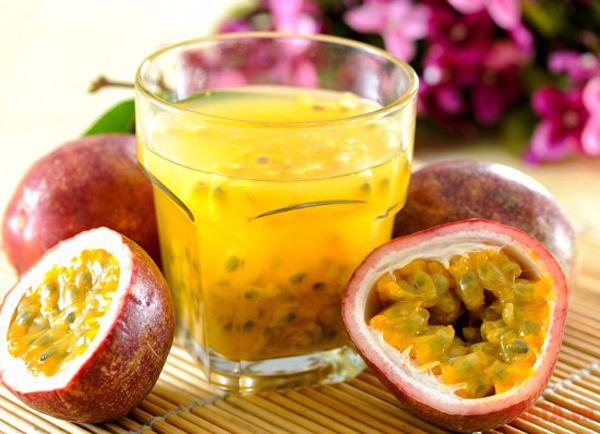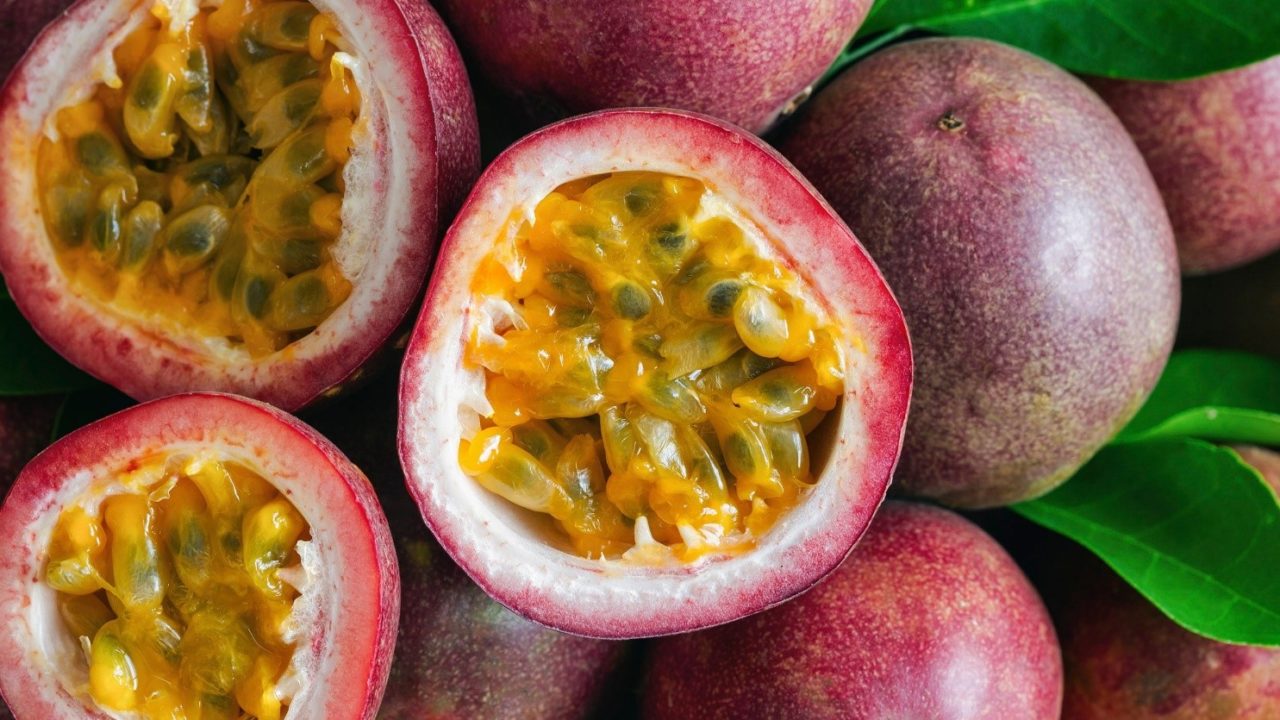ABOUT PASSION FRUIT
Passion fruit, commonly known as Passiflora edulis, is a vine species of passionflower native to southern Brazil through Paraguay and northern Argentina. Although passion fruit is a tropical fruit, some varieties can survive in subtropical climates. For this reason, passion fruit is grown all over the world, both in Asia, Europe, Australia as well as South and North America.

Passion fruit is the fruit of a passionflower (Photo: Internet)
There are many varieties of passion fruit that vary in size and color rind. Among them, the purple and yellow rinds are the most popular. The fruit is about 3 inches long with thick rind. When the fruit is ripe the rind will become wrinkly. Inside passion fruit are sacs that are filled with orange-colored juice and small, crunchy seeds. Here are two popular types of passion fruit.
Passiflora edulis: The small passion fruit is round or oval with the purple skin.
Passiflora flavicarpa: Round or oval with the yellow skin and the size is usually larger than the purple variety.
9 BENEFITS OF PASSION FRUIT YOU SHOULD KNOW

Passion fruit provides many surprising health benefits to the body (Photo: Internet)
1. Strengthen the immune system
Passion fruit is rich in vitamin C, beta-cryptoxanthin and alpha-carotene which help to boost the immune system. They also improve the body's ability to fight infections and protects the body from damage caused by free radicals. Some studies show that vitamin C also has an important role in helping the body absorb more iron from foods. Iron may increase hemoglobin in our red blood cells.
2. Rich in antioxidants
Passion fruit is rich in antioxidants which play an important role in improving blood flow, especially to the brain and nervous system. Additionally, antioxidants may reduce stress and reduce inflammation in the body, both of them can cause the heart disease and Alzheimer's disease.
3. Supports Heart Health
Passion fruit has been reported in normalizing the blood pressure. A low-sodium and high-potassium diet help to lower blood pressure. In addition, this kind fruit contains plenty of fiber, vitamins C and B6, and potassium that are heart protectives in nature. The fiber may increase HDL cholesterol and reduces LDL cholesterol to safeguard your heart. And it is low in cholesterol which is probably the number one enemy of your heart.
4. Provide a good source of fiber
The pulp of passion fruit contains a lot of fiber, which is an important part of any diet. It helps to regulate the digestive system and keep the intestinal tract healthy, preventing constipation, and intestinal disorders. Due to the great source of fiber, regular consumption of passion fruit can help prevent constipation, improve digestion and overall health.
5. Helps your skin look younger
This nutritious tropical fruit contains high levels of vitamin A, Vitamin C, riboflavin and carotene. Vitamin C helps antibacterial, heals the skin's damage, helps the skin to recover quickly and keeps the skin bright and smooth. Passion fruit contains a large amount of citric acid. This substance helps to clean dirt, unclog pores, prevent acne from forming.
6. Promotes restful sleep
Contains medicinal alkaloids and several phytonutrients passion fruit serves as powerful sedatives. And magnesium plays important role in improving the quality, duration, and tranquility of sleep. Passion fruit also regulates your metabolism to reduce the occurrence of sleep disorders.
7. Boosts eye health
Vitamin A safeguard eye health against age-related macular degeneration. It also helps to prevent cataracts and lower the rate of skin aging and wrinkling.
8. Helps to prevent anemia
This tropical fruit also contains copper, iron, magnesium and phosphorus, contributing to bone health and to normal RBC counts, which helps to counter anemia.
9. Controls insulin levels for diabetics
Passion fruit has a low glycemic index. That is the reason why this fruit can maintain insulin levels for diabetics. It also helps to make you feel full without increasing the calorie intake.
Enjoy passion fruit juice regularly to help increase health
HOW TO EAT PASSION FRUIT
Passion fruit has a sweet yet tangy flavor. There are many ways to enjoy the taste of passion fruit. The first step is to cut the rind of the passion fruit and remove the flesh along with the seeds.
You also can eat the seeds with the flesh and juice. First of all, you can eat the pulp and seed straight out of the fruit. The sweet-tart flavor of passion fruit is a great ingredient in a number of dishes including beverage, ice cream, dessert, salad, cake, jam, and more.

Passion fruit is a commonly used ingredient in food (Photo: Internet)
Juice: Use the pulp with seed (or remove the seed if you like) and blend it with water, syrup. You can also add the mint to make the beverage more refreshing.
Smoothie: Mix the passion fruit pulp with ice and other fruits like banana, kiwi, and pineapple for a sweet, delicious treat. Blend the ingredients into a smooth paste and enjoy.
Ice cream: Add passion fruit juice to an ice cream recipe or make passion fruit sorbet by blending pulp, sugar, and water.
Mousse: Add passion fruit to create the floral and tangy flavor.
Jam: Boil the passion fruit pulp with lemon and sugar. You can also mix it with other tropical fruits to make mixed flavors.



